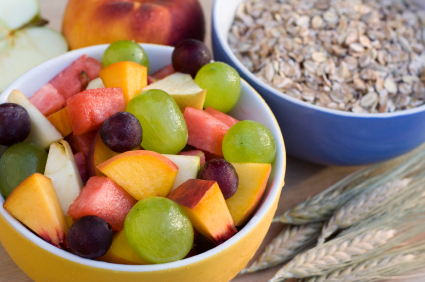
Recent studies have focused on the effects of fibre on weight loss and losing stomach fat, and having a better understanding of what fibre is, what foods are rich in fibre and how it is digested could help people lose weight and keep it off permanently.
What is fibre?
Fibre is sometimes also known as roughage. It is plant material which is not easily digested by the body and helps to keep the digestive system healthy. There are two commonly found types of fibre; insoluble and soluble fibre. Soluble fibre helps waste material move more quickly through the body. Insoluble fibre prevents the body from becoming constipated, and ensures that toxins are not able to build up in the intestines. Fibre is an essential part of a healthy balanced diet.
How is fibre related to weight loss?
Soluble fibre slows down the process of digestion in the body which means that the energy from the food being digested is released more steadily rather than as a rush into the blood stream. Eating foods which are high in fibre will keep someone feeling fuller for longer, and therefore less likely to feel hungry and give in to the temptation to snack between meals.
Fibre in itself is calorie free as it is not digested, and therefore foods which are high in fibre are by definition low calorie too. Fibre may also reduce cholesterol levels, and thus help to prevent heart disease.
Foods which are high in fibre are also generally low calorie, and just the sorts of foods people trying to lose weight should be eating more of. Eating low calorie foods will help your body burn excess fat and stomach fat more quickly and seeing the fat disappear from problem areas like thighs or stomach will help keep people trying to lose weight motivated.
What foods are rich in fibre and how much should I be eating?
Too little fibre in the diet is not a good thing and can lead to constipation and stomach problems. Eating too much fibre can also cause problems as minerals may not be absorbed properly into the body. People trying to lose weight should aim for eating around 30g – 40g of fibre per day. In addition to the fibre, it is important to drink plenty of water, at least 8 cups per day, to aid the digestive process.
Foods which are rich in soluble fibre, the type which slows the energy release into the bloodstream, include fruit and vegetables of all sorts, pulses such as lentils, peas or beans, oats, barley, potatoes and soya products. Insoluble fibre can be found in wholemeal bread, bran, seeds, nuts and brown rice.
For people who are not eating much fibre, it is important to increase intake gradually as if the digestive system is not used to lots of fibre it can cause flatulence and pain in the stomach and abdomen.
How can I incorporate more fibre into my diet?
Adding extra dietary fibre into your diet need not be complicated. A few simple steps can make it easier to get the recommended amounts every day. The Lose Baby Weight smoothies are great for fibre content and especially when you add in berry fruits and oats to your smoothies.
Wholewheat pasta can be substituted for regular pasta, fruit and vegetables can be eaten with the skin on rather than peeled, and lentils or chickpeas are easy to add to stews, curries or salads. For those trying to lose weight, it is best to look at high fibre foods as a valuable weight loss tool as well as a healthy lifestyle choice.
If you are trying to lose weight then look at your fibre intake and consider trying the Lose Baby Weight plans which are designed to give your body optimal nutrition and fibre to assist weight loss naturally.
And don’t forget to see our 28 Day Diet & Exercise Plan which is packed full of fibre rich foods and recipes
